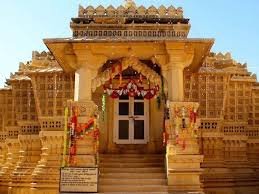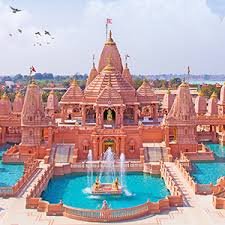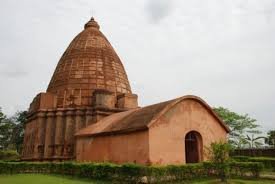Shri 1008 Chintamani Parshwanath Jain Temple (Jaisalmer): A Glimpse into Jain Heritage and Spirituality
Jaisalmer, known for its golden fort and vast desert landscapes, is home to one of the most revered Jain temples in India—the Shri 1008 Chintamani Parshwanath Jain Temple. This temple not only stands as an architectural marvel but also carries profound spiritual significance. Dedicated to Lord Parshwanath, the 23rd Tirthankara of Jainism. The temple invites pilgrims and tourists alike to witness the grandeur of Jain traditions and the brilliance of ancient craftsmanship. Whether you are a devout follower of Jainism or a lover of historical monuments, this temple offers an enriching experience.
A Journey into History and Heritage
The Shri 1008 Chintamani Parshwanath Jain Temple has deep historical roots that reflect the rich cultural tapestry of Jaisalmer. Built in the 16th century, the temple is a masterpiece of Rajasthani architecture, known for its intricate carvings, stunning marble work, and fine sculptures. The temple’s construction is credited to local Jain merchants who wanted to create a space where devotees could honor Lord Parshwanath and seek his blessings. Over the centuries, the temple has evolved into one of the most significant pilgrimage sites for Jains around the world.
Upon arriving, visitors are immediately struck by the beauty and serenity of the surroundings. The temple stands against the backdrop of the golden desert, with its magnificent architecture contrasting against the vast, open landscapes. The pale yellow sandstone used in the temple’s construction adds a warm, inviting glow, especially during sunrise and sunset. This architectural brilliance draws not just religious devotees but also photographers, historians, and travelers from around the globe.
The Divine Idol of Lord Parshwanath
As you step inside the temple, you are greeted by the divine presence of the idol of Lord Parshwanath. The idol is crafted from pure white marble and is adorned with intricate jewelry and beautifully designed robes. This serene depiction of Lord Parshwanath, with a calm and meditative expression, inspires a sense of peace and tranquility.
Visitors often marvel at the shrine’s symbolic representation of spiritual purity and austerity, reflecting the Jain philosophy of non-violence, asceticism, and truth. The temple also houses statues of other revered Tirthankaras. Offering devotees the opportunity to pay homage to the entire Jain pantheon. The idol of Lord Parshwanath, however, remains the central focal point of worship and devotion.
The Architecture: A Testament to Jain Craftsmanship
One of the most striking features of the Shri 1008 Chintamani Parshwanath Jain Temple is its exquisite architecture. The temple showcases the remarkable skills of Jain artisans, whose craftsmanship is visible in every corner.
Furthermore, the temple features a series of spiritual chambers and corridors leading to the sanctum sanctorum. The ceiling, decorated with floral motifs and geometric patterns, reflects the attention to detail that the temple’s craftsmen put into their work. In every corner, you can see the blend of grandeur and simplicity, a balance that is quintessential in Jain temples, symbolizing the core values of Jainism: simplicity, humility, and grace.
Rituals and Religious Practices
Jains believe that visiting temples is an essential part of spiritual purification. As part of the temple’s daily routine, the priests perform rituals and prayers, which are an integral part of the temple’s religious life. Visitors can witness the morning aarti (prayers), during which devotees chant hymns and sing praises to Lord Parshwanath. The sounds of bell rings and divine chants resonate throughout the temple, invoking a sense of spirituality and devotion.
Apart from the daily rituals, special events like Paryushana and Mahavir Jayanti see the temple’s grand celebrations. During these festivals, the temple is beautifully decorated with flowers, lights, and rangoli, and the devotees gather in large numbers to celebrate and seek the blessings of the Tirthankaras. Pilgrims also offer prayers, perform fasts, and donate to the temple as an act of faith.
The Spiritual Significance of the Temple
For the Jain community, the Shri 1008 Chintamani Parshwanath Jain Temple is much more than just an architectural marvel—it is a spiritual sanctuary. Devotees from all parts of India, as well as from abroad, visit the temple with sincere devotion, seeking blessings for peace, prosperity, and liberation. The temple is believed to offer spiritual relief, help devotees overcome difficulties, and bring mental clarity and peace.
The name Chintamani Parshwanath is derived from the belief that Lord Parshwanath holds the power to eliminate all worries and anxieties. Devotees come to this temple seeking solace and relief from mental burdens, believing that Lord Parshwanath will grant them tranquility.
Pilgrimage and Accessibility
The temple, though located in the desert city of Jaisalmer, is easily accessible from the city center. Visitors can reach the temple by car, taxi, or even on foot as part of a pilgrimage. The temple is situated amidst the peaceful desert landscapes, allowing pilgrims to connect deeply with nature and their spirituality.
Moreover, the serene surroundings enhance the meditative atmosphere of the temple, enabling devotees to experience a spiritual journey far from the distractions of daily life. The peaceful ambiance of the temple encourages reflection, meditation, and a deep sense of divine connection.
Conclusion
The Shri 1008 Chintamani Parshwanath Jain Temple in Jaisalmer is a symbol of spiritual strength, architectural brilliance. And Jain cultural heritage. From its exquisite marble carvings to its serene ambiance, the temple offers a tranquil retreat for devotees and visitors alike. Whether you are here for spiritual solace, to admire the ancient craftsmanship, or to learn about Jainism, the temple offers a profound and enriching experience that will leave you with a deeper understanding of faith, history, and art.





